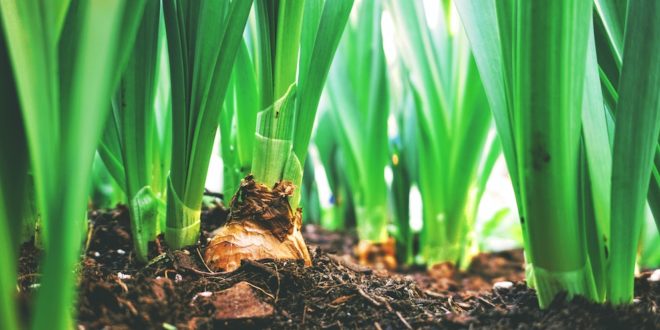Beautiful spring bulbs have been lighting up the country since late-winter. First off the mark were the demure snow drops, followed in quick succession by muscari (also known as matcheads or grape hyacinths), paper narcissi, daffodils (the common name for any plants in the Narcissus family), hyacinths, and then tulips. The connoisseurs among us have also been enjoying trilliums, fritillaria, erythronium (dog’s tooth violates), and a whole line-up of other treats. If only we could have spring flowers year-round! The reality, of course, is that we can’t, but we can care for our spent bulbs so they have the best chance of blooming again for us, next spring.
Easy-as
Different varieties of bulbs are so differing in their demands. Of those grown in the garden (rather than in pots), several species ask little of us in order to flower again the very next year. These include snowdrops, muscari, fritillaria and trillium. Provided they are kept in well-draining ground, and covered (after dying down) with a layer of weed-free compost or mulch, they will bloom again next spring.
Delightful daffodils
Daffodils grown in the ground are hardy. Once they have finished flowering, keep the soil around them damp, but not moist until the foliage has died off. The bulb’s natural food is its foliage so never cut it down, bend it over, tie it up, or even secure it with a rubber band. Doing any of these things will stop the goodness in the greenery being absorbed fully by the bulb. If you feel you must feed the bulbs, wait until autumn to do this, and use a balanced bulb fertilizer, or a scattering of blood and bone and a top-up of weed-free compost. Every 3-4 years, dig up your daffodil bulbs after their foliage has dried off completely, and replant, giving the bulbs more space to grow.
Sadly, daffodils grown in containers will not bloom satisfactorily the following year. Instead, let them die down in the same way as garden-grown daffs, and remove them from their pots once their foliage is completely yellow. Plant them in the garden where they can renew their strength and flower again the spring-after-next.
Tricky tulips
Grown in containers, many tulip varieties will not produce a flower the following spring. Grown in the ground, flowering in the following spring is not always reliable either. This is why most gardeners treat tulips as annuals (flowers that bloom once, then die). Although this can seem wasteful, given the cost of new bulbs, gardeners also spend a lot on annuals, so seeing the bulbs from this perspective can be consoling. That said, to give your ground-grown tulips the very best chance of flowering the following spring, remove the spent blooms by snipping them off just below the head. Let the stem and foliage turn yellow, and die off completely. If you live in a warm part of the country (think mid-North Island north, unless you are in a mountainous region), dig up your tulips bulbs, dry them off, and then, in March, place them in a bag in the fridge for 6-8 weeks. Replant them in May. In other parts of the country, leave the bulbs in the ground, and cover the dry foliage in weed-free compost or mulch.
Happy hyacinths
Hyacinths grown in loose, well-drained garden soil will happily flower for 2-4 years, although their blooms tend to decrease in size over this time. Hyacinths grown in pots will not perform well, if at all, the following year, and should be moved into the garden after flowering. Whether garden- or container-grown, hyacinths benefit from having their flower spikes cut right back after the bloom has lost its appeal. This prevents the bulb’s energy being directed into seed setting.
Caring for your spring bulbs, now, can give them the best chance of surviving and, hopefully, blooming again next year.










Join the Discussion
Type out your comment here:
You must be logged in to post a comment.